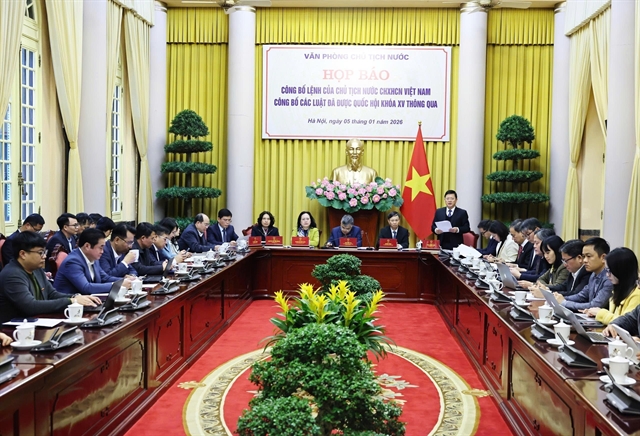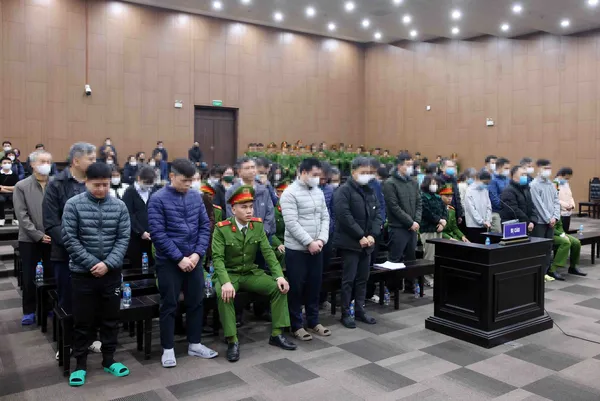 Economy
Economy

The textile and garment industry earned US$31 billion from exports last year, a year-on-year increase of over 10 per cent.
 |
| Vũ Đức Giang, chairman of the Việt Nam Textile and Apparel Association |
The textile and garment industry earned US$31 billion from exports last year, a year-on-year increase of over 10 per cent.
The Việt Nam Textile and Apparel Association believes exports will top $34-35 billion this year helped by many positive factors.
Vũ Đức Giang, the association’s chairman, talks to Việt Nam News ’s reporter Xuân Hương about this and the efforts made by the industry to enhance their competitiveness and add value to their products.
What do you think about the textile industry’s export prospects this year?
The textile and garment industry earned nearly $8 billion from exports in the first quarter of the year, an increase of 13.5 per cent over the same period last year. This is the highest growth rate in the first quarter in the last four years.
The exports in the second quarter are expected to be $8.5 billion and we forecast exports in the first half to go up by 14 per cent over the same period last year.
We believe the industry’s exports for the whole year will increase to $34-35 billion, and there are three factors that give us confidence.
Firstly, free trade agreements, especially the Comprehensive and Progressive Agreement for Trans-Pacific Partnership (CPTPP), have created a driving force for enterprises to penetrate markets where we previously had very small market shares such as Canada, Australia and New Zealand.
Secondly, the Việt Nam-EU FTA, which is expected to take effect in 2019 or 2020, is also a spur for local and foreign investors to invest in core areas and areas that face a supply shortage such as yarns, fabric and other inputs.
Promoting investments in production of fabrics and input materials will enable us derive greater benefits from FTAs. Once we can increase the supply of inputs, we will be more active in our development strategy of switching production methods from FOB to ODM (Original Design Manufacturing) to raise added value and competitiveness for the products.
The third is the technology factor.
Now our manufacturers are focusing much on technology, especially Industry 4.0 technologies. There are many kinds of modern machines and equipment in the textile, dyeing, and yarns industries.
A machine that can replace two to three workers is the driving force for attaining higher labour productivity and shorter delivery times, which enable us to compete better in terms of prices.
We also invest in 3D design software to facilitate making ODM products. Manufacturers have invested more in their factories and facilities to ensure a green and safe environment for workers and consumers.
These are factors affecting the attractiveness of the products and importers’ assessment of Việt Nam’s textile industry.
Can you tell us more about the benefits of Industry 4.0 technologies to manufacturers?
There are many Industry 4.0 technologies.
For instance, in the yarn sector, previously we invested in 50,000 spindles, we needed about 400 workers to handle them. But with the current technology we need just 100 workers, or even just 58, to handle a 50,000-spindle factory.
In the weaving sector, previously one worker could manage four to five weaving machines, but with the current automated machinery, one worker can manage nine or 10 or 12 weaving machines. These machines are extremely modern and offer high productivity.
Dyeing previously needed some manual work, but the dyeing process can now be done automatically through software.
In design, previously a designer could make two designs or so a day. Now 3D design software can give us a design sample within 15-20 minutes or even less.
The development of technology has helped manufacturers reduce their production time and consumers to access more new products.
Does the growth of such technologies affect jobs?
Not everything in the garment industry can be automated, not all products are produced automatically. Only a few products with simple seams can be automated. Products with complicated seams still need human hands to make them.
Can you tell us about foreign direct investment in the textile and garment industry?
Since the beginning of this year FDI in the textile and garment industry has been worth $1.1 billion. They invested mainly in yarns and textiles.
The first quarter also coincided with the Lunar New Year, so foreign investors did not invest much in this period. The investment is expected to increase strongly from the second quarter onwards.
China, Taiwan, Hong Kong, Japan, South Korea, Thailand, the US, the EU, and Russia have enhanced investment in Việt Nam’s textile and garment industry.
The ASEAN-Hong Kong free trade agreement will enter into force in 2019. Do you think it will have big impact on the textile and garment industry?
I think this FTA will not have much impact on the industry compared to other FTAs such as CPTPP or the Việt Nam-EU FTA because Hong Kong has a small population.
What the textile industry looks forward to is the CPTPP. If the UK or South Korea join the agreement or the US comes back, it will be a great motivation for the Vietnamese textile and garment industry. — VNS




